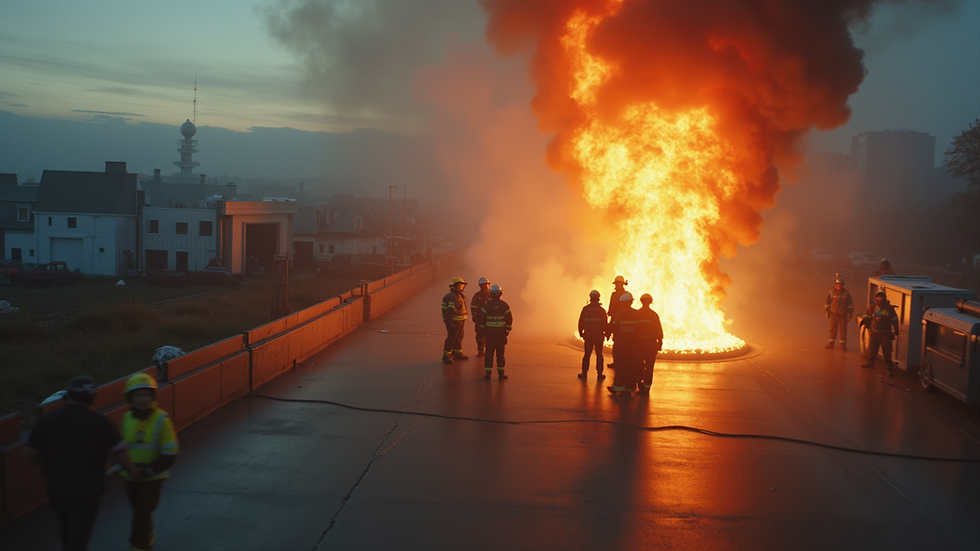Steps to Enhance Active Shooter Preparedness
- Mark Zirtzlaff

- Jul 25
- 4 min read
In today's world, the importance of emergency readiness training cannot be overstated. With increasing incidents of violence, particularly active shooter situations, it is imperative for organizations and individuals to be prepared. This blog post will guide you through the steps needed to enhance your active shooter preparedness, providing actionable information that can save lives during a crisis.
Understanding Emergency Readiness Training
Emergency readiness training is designed to help individuals and organizations prepare for emergencies, including active shooter situations. This training encompasses various techniques and practices that increase an individual's ability to respond appropriately in the face of danger.
Organizations should prioritize creating a comprehensive emergency plan, including training sessions for employees. These plans should cover lockdown procedures, evacuation routes, and communication protocols. Regular training sessions will ensure that everyone knows their roles and responsibilities, which is vital for a cohesive response during dangerous situations.

Creating a Comprehensive Response Plan
One of the first steps in enhancing active shooter preparedness is to create a comprehensive response plan. A good plan outlines how to react during an active shooter situation and includes both preventive measures and response strategies.
Assess Risks: Begin by evaluating the unique environment of your organization. Are there open spaces? Limited exits? High foot traffic areas? This assessment will help tailor your plan.
Establish Communication Protocols: Define how information will be communicated during an emergency. Designating a specific communication leader can streamline this process.
Develop Procedures: Create specific protocols for lockdowns, evacuations, and communications. Training employees on these procedures can help reduce panic and confusion.
A well-defined plan and consistent practice can significantly improve response times and effectiveness during an emergency.

Training and Drills
After creating a response plan, the next step in enhancing emergency readiness training is to implement regular training and drills. This is crucial for ensuring that everyone knows how to react when an active shooter situation arises.
Conduct Regular Drills: Schedule frequent drills to practice lockdown, evacuation, and communication protocols. Make these drills as realistic as possible to prepare everyone for the actual scenario.
Invite Professionals: Consider hiring experts in emergency preparedness for specialized training sessions. They can provide insights and techniques specifically designed for active shooter situations.
Evaluate Performance: After each drill, review how well the response coordinated with the established plan. Gather feedback to identify areas needing improvement.
Through ongoing drills and training, employees can react more effectively in real-time scenarios.

Encouraging a Culture of Safety
Building a culture of safety in your organization is essential for effective active shooter preparedness. This culture can empower employees to take proactive actions regarding their safety and the safety of their coworkers.
Promote Awareness: Increase employees' understanding of potential threats by incorporating safety training into onboarding processes. Encouraging awareness can lead to early detection of risks.
Foster Open Communication: Establish a system for employees to report suspicious behavior without fear of retribution. Safe environments promote vigilance and collective mindfulness regarding safety.
Provide Mental Health Resources: Ensuring access to mental health resources can help to address underlying issues that may lead to emergencies. Support systems build resilience, enabling quicker recovery from crises.
Creating a culture of safety fosters an environment where employees take responsibility for their safety and that of their peers.
Using Resources Effectively
Utilizing available resources is critical for enhancing your active shooter preparedness. Numerous organizations and tools can aid in this preparation.
Federal and State Guidelines: Follow guidelines from organizations like OSHA or the Department of Homeland Security for emergency preparedness best practices.
Training Courses: Consider enrolling employees in specific training courses focusing on active shooter preparedness. These sessions often provide valuable insights and techniques that can augment your existing training efforts.
Technology and Security Measures: Implement technology such as surveillance cameras and panic buttons, which can enhance security during an emergency.
By effectively using available resources, you can ensure that your organization is well-equipped to handle an active shooter situation.
Ongoing Evaluation and Improvement
Regularly evaluating your emergency readiness training is essential in maintaining effectiveness. As environments and threats evolve, so too should training programs and response strategies.
Solicit Feedback: After drills and training sessions, gather feedback from participants to identify strengths and weaknesses in the existing program.
Stay Updated on Trends: Keep informed about recent developments in active shooter situations and emergency preparedness strategies. Creating a system for ongoing education can help maintain a state of readiness.
Adapt and Grow: Be willing to revise your training programs and response plans based on the feedback and trends you encounter. Continuous improvement is key to effective preparedness.
In helping to cultivate a proactive, educated workforce, ongoing evaluation ensures that everyone remains ready for potential crises.
Ensuring Safety Through Active Shooter Preparedness
In an era where we cannot ignore the threat posed by active shooter situations, enhancing emergency readiness training is vital. By understanding emergency training, creating response plans, conducting drills, fostering a culture of safety, utilizing resources, and continually evaluating preparedness, organizations can significantly enhance their readiness.
To learn more about active shooter preparedness and the specific steps you can take, visit this link. Your preparedness could be the difference between life and death in a critical situation. Embrace these strategies to ensure safety within your environments and communities.






Comments